|
Prince Elector
Friedrich August II. of Saxony, King of Poland and son
of August the Strong, thought about rewarding his
military personnel with a new order quickly after taking
the thrown in 1733. He choose Henry II. (1002-1024) as
the new orders patron.
On October 7, 1736,
the knight military order of the holly Henrico was
therefore founded.
The tie between Saxony
and Poland ceased to exit with the death of August II.
in 1763. Since Prince Elector Friedrich August III.
was still not of legal age at the time his brother
Prince Xaver took over the administration until 1768.
|
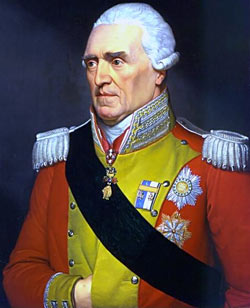
Img
1: Friedrich August III. |
|
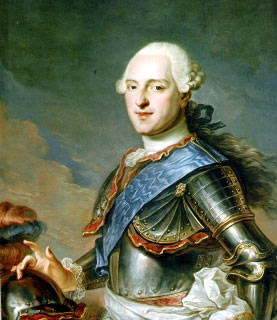
Img
2: Prince Xaver |
He resurrected the Military St. Henry order after it
fell dormant during the last years. Following
a cooper plate showing the 1796 design:
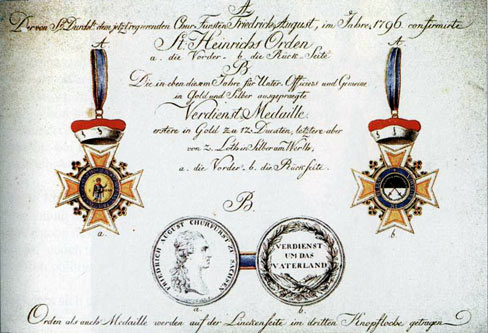
Img 3:
Cooper Plate 1796
Only
seven knights were bestowed in total in 1796.
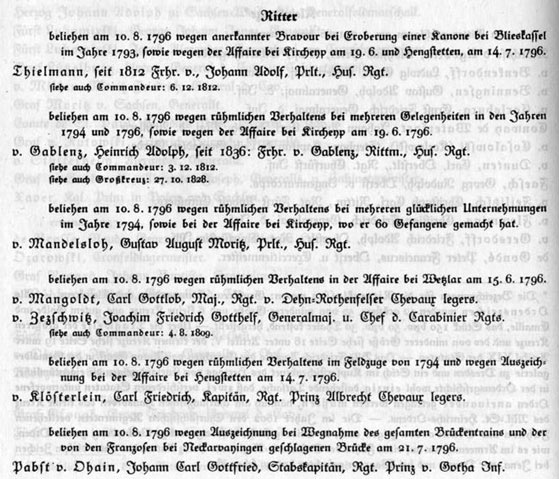
Img
4: List of the few knight cross recipients in 1796
Napoleon lifted
the Saxon Electorate in 1806 to a proper kingdom and
Prince Elector Friedrich August III. from now on King
Friedrich August I. of Saxony changed the old design of
his order by altering the medallion and upgrading to a
proper kings crown.
Finally on
December 23, 1829, proper statues to the order were
released by his successor King Anton.
The following knight
cross seems to be an example of this timeframe. Still showing
Prince Xaver's name on the medallion wreath it already has the
king's crown. A sensational find since the literature claims
none of the early crosses survived.
|
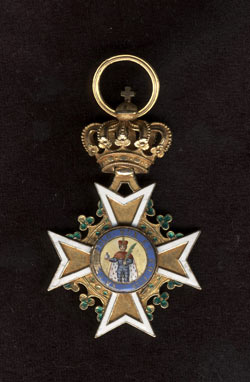
Img
5: Avers |
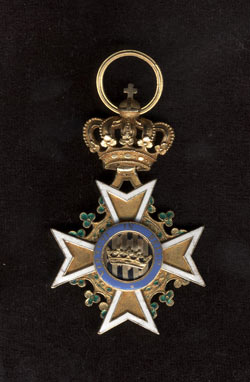
Img
6: Reverse
|
But is this really on of
the seven in 1796 awarded pieces that somehow was adapted in
1807, since the motto reads:"XA P... OLO * DUX ET RO * 1738"
But why does St. Henry hold a palm branch in his hand instead
of the sword? Here a detailed image of the center medallion:

Unfortunately
after further research it becomes clear that we are
looking at a later French manufactured decoration. The literature
stays correct with its statements that no example from
1806 and earlier exist.
A.M.Perrot's
book, "Ritterorden der
verschiedenen Nationen" from 1821 does picture a similar
piece. Besides the motto we find the palm branch here as
well:
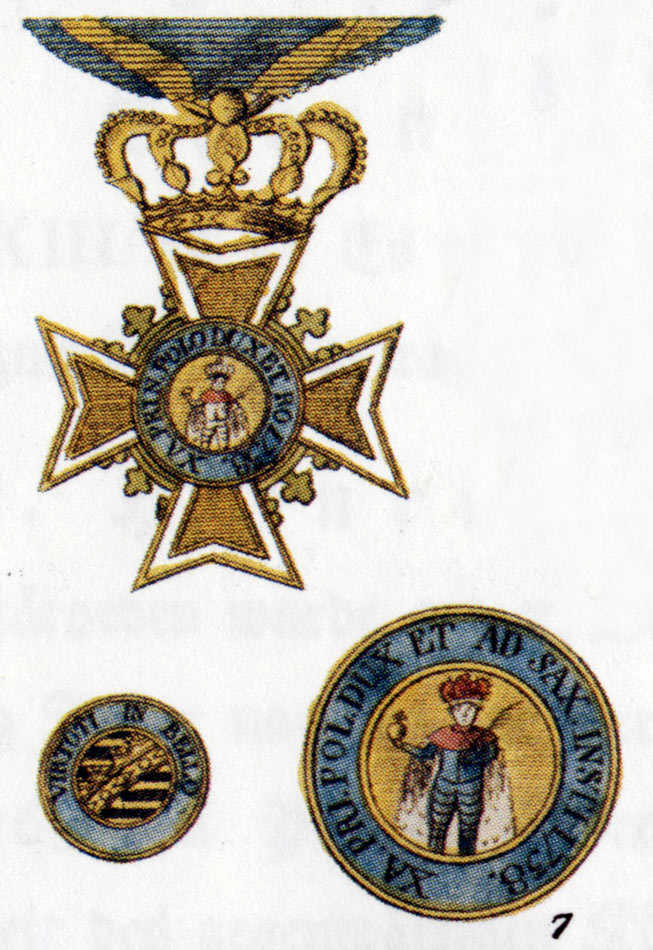
Img
8: From Perrot: "XA. PRIN. POLO. DUX ET RO
1738."
During the
earlier part of the 19th century images from books were very
often used to craft an actual order decoration. This is especially true if a
recipient in a foreign country had to obtain an example for reasons
of destruction or loss. Most imagery from period literature
was based on descriptions in order statues which left the illustrator
with wide margin of error in his interpretation of the actual
design.
It is therefore
normal to find order decorations from the earlier 19th century
that are not exactly true to the correct design.
Image 3 from D.Weber/P.Arnold/P.Keil,
"Die Orden des Königreich Sachsen"
© A. Schulze Ising, IV/13
| 




